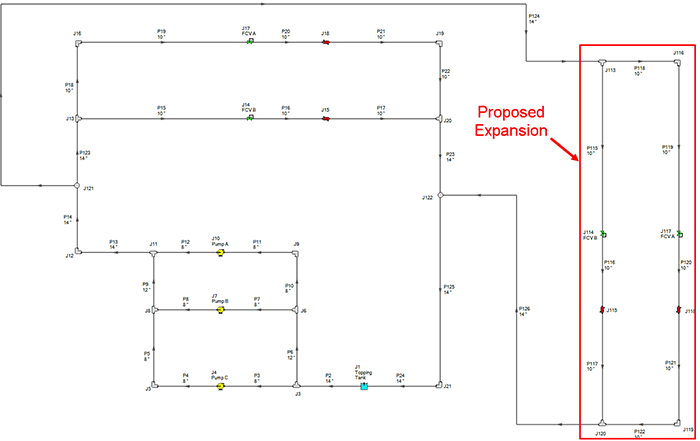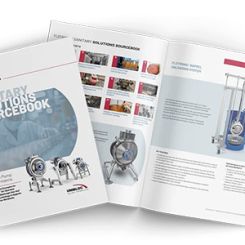Most engineers know the basic hand calculations to properly size a pump. Add the resistances from the piping, components and fittings as well as system static head, and this will provide you with the total dynamic head the pump needs to deliver the desired flow. So, why is it important to use flow analysis software when you can size a pump by hand? What about on large systems? Hand calculations are more difficult for complicated systems with significant looping, branching, control features, etc. What about when heat transfer is important? Often, hand calculations are a best guess that leads to an oversized system with several safety factors. What if you could size and select your pumps for these complicated systems to avoid the need for extra safety factors? When selecting pumps, flow analysis software makes pump sizing and selection more efficient. A good flow analysis software will provide solid data and accurate models. As a result, calculation errors can be significantly reduced, and a sizing process that is easy to apply to different system configurations can be streamlined, implemented and passed on to other engineers for future expansions.
 Image 1. Original piping system shown with a proposed expansion to the right. The proposed expansion flow paths through the flow control valves and heat exchangers are assumed to be the same as the original system. (Image courtesy of Applied Flow Technology)
Image 1. Original piping system shown with a proposed expansion to the right. The proposed expansion flow paths through the flow control valves and heat exchangers are assumed to be the same as the original system. (Image courtesy of Applied Flow Technology)10 Things to Look for When Evaluating Flow Analysis Software
- Multiple Levels of Software Calculation Validation—This can include model comparisons to published examples, an official quality assurance program such as one that adheres to ASME NQA-1 standards for usage in safety-related systems in the nuclear industry.
- Scenario Management—An ability to model a variety of cases within a single model file where any input parameter or fluid properties can be changed to determine their effect on results. A “family-tree” like scenario structure is effective where changes in parent cases should automatically update dependent child cases. An example could be modeling varying pump speeds across scenarios that reflect different operating conditions.
- Global Editing—Efficiency is important. The ability to massively edit multiple pieces of information at the same time is key. For example, specifying the same pump curve or pump speed for multiple pumps is easier and more efficient than entering the input component by component.
- Excel Integration—Importing model changes to multiple scenarios simultaneously makes updating cases with data variances effective. Sending specific model output results, such as pump operating points and pump and system curve data, in an automated fashion leads to significant flexibility when carrying out other calculations.
- Design Alerts for Maintaining Code Compliance—Quickly bring attention to when important parameters are outside the maximum or minimum allowable boundaries.
- Heat Transfer—Full piping heat transfer calculations should be included to handle convection, buried pipes, layers of insulation, and the ability to calculate external heat transfer coefficients based on ambient temperatures and windspeeds. Heat transfer through heat exchangers is necessary, as is the ability to perform the proper energy balances to determine the mixture temperature when two streams mix.
- Goal Seeking & Transient Modeling—Goal seeking saves time by automatically changing multiple input parameters to provide the needed results. This also aids with model calibration to measured data. Perhaps users need to vary the pump speed of several pumps in order to achieve a desired flow elsewhere in the system. Goal seeking automates this process by removing time- consuming manual iteration. Transient modeling is important to consider because systems rarely stay the same, and it is necessary to determine the overall dynamics of a system and how multiple components interact with each other as things change. Simply running multiple cases as a series of steady-state runs could cause users to miss important or problematic intermediate results.
- Non-Newtonian & Slurry Modeling—A quality flow analysis software should be able to handle not only a wide variety of fluids other than water, but also other types of behavior such as paper stocks, power-law fluids, Bingham plastics or settling slurries.
- System Cost Analysis—Accounting for the material, installation, maintenance and energy costs for an entire piping system in an easy-to-read cost report is just as important as determining the system flow, pressure and temperature distributions.
- Water Hammer Analysis—Water hammer situations can lead to disastrous effects on sudden pressure surges. A quality flow analysis software should have the ability to determine the system pressure response due to various causes like pump trips, valve closures, pump starts and the ability to use surge suppression equipment.

